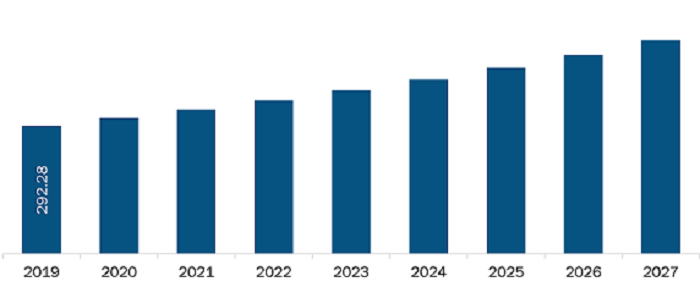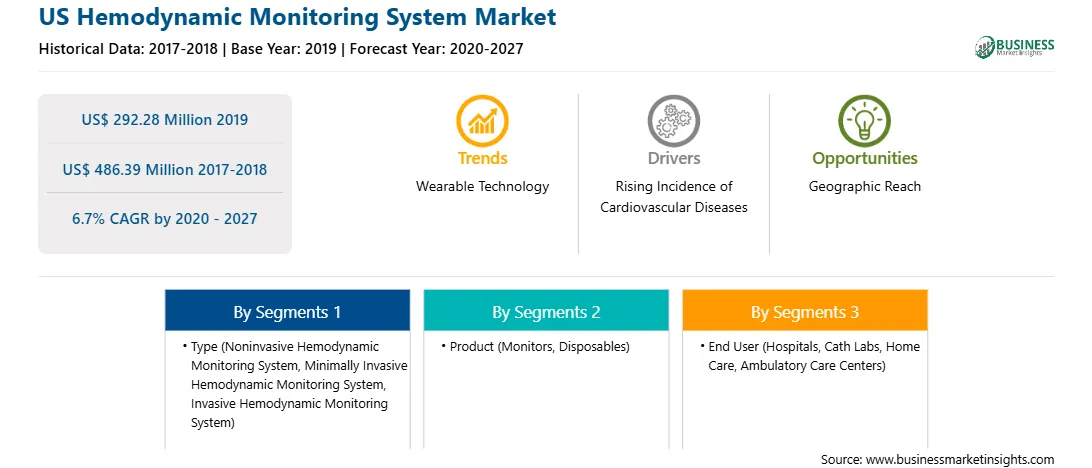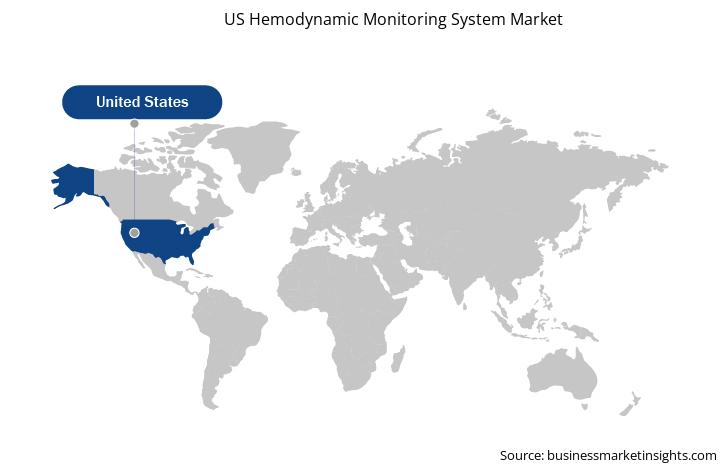The growth of US hemodynamic monitoring system is estimated due to the factors such as increasing product developments and approvals, rising cardiovascular disease prevalence, and growing geriatric population. On the other hand, the market is projected to experience slow growth due to risks associated with invasive hemodynamic monitoring systems.
Advancements in medical technology and innovations, as well as increase in R&D spending by manufacturers, have resulted in the launch of various medical devices, including hemodynamic monitoring systems. At present, the hemodynamic monitoring systems are used to guide physicians to design the therapies or treatments at the time of circulatory instability for the patients living with cardiovascular diseases.
In the US, various players are operating in the hemodynamic monitoring system market; they are involved in the product development activities. For instance, in February 2018, Getinge AB has received Section 510(k) clearance from FDA for its PulsioFlex Monitoring System and PiCCO Module. It is a modular platform integrated with intelligent visualization for advanced hemodynamic patient monitoring. The PulsioFlex Monitoring System is ideal for use in clinical settings such as operating rooms (ORs), emergency rooms (ERs), and intensive care units (ICUs). Similarly, various international players have launched more such hemodynamic monitoring systems. For instance, in March 2018, Canon Medical Systems Corporation (Japan) acquired a Netherlands-based company named Fysicon B.V. In September 2017, Fysicon B.V. received FDA’s Section 510(k) clearance for its QMAPP Hemodynamic Monitoring systems designed for monitoring the cardiac conditions of patients in cardiac catheterization labs. Further, in April 2016, Siemens Healthineers (Siemens AG) launched its revamped version of Sensis Vibe. The system was launched at the American College of Cardiology’s 65th Annual Scientific Session (ACC.16), held during April 2–4, 2016, in Chicago, Illinois, US. The system enables catheterization lab professionals to manage data proficiently, and it also assists in streaming down the documentation and reporting in the interventional treatments.
In 2019, the invasive hemodynamic monitoring system segment accounted for the largest market share in US hemodynamic monitoring system market by type. However, it is estimated that noninvasive hemodynamic monitoring system is likely to grow at a faster pace over the forecast period. By product segment disposable segment held largest share of the market and monitors segment is expected to grow at a faster pace. Whereas, by end user, hospitals segment held largest share in the market and is also estimated to grow at a faster pace during the forecast period.

Strategic insights for the US Hemodynamic Monitoring System provides data-driven analysis of the industry landscape, including current trends, key players, and regional nuances. These insights offer actionable recommendations, enabling readers to differentiate themselves from competitors by identifying untapped segments or developing unique value propositions. Leveraging data analytics, these insights help industry players anticipate the market shifts, whether investors, manufacturers, or other stakeholders. A future-oriented perspective is essential, helping stakeholders anticipate market shifts and position themselves for long-term success in this dynamic region. Ultimately, effective strategic insights empower readers to make informed decisions that drive profitability and achieve their business objectives within the market.

| Report Attribute | Details |
|---|---|
| Market size in 2019 | US$ 292.28 Million |
| Market Size by 2027 | US$ 486.39 Million |
| Global CAGR (2020 - 2027) | 6.7% |
| Historical Data | 2017-2018 |
| Forecast period | 2020-2027 |
| Segments Covered |
By Type
|
| Regions and Countries Covered | United States
|
| Market leaders and key company profiles |
The geographic scope of the US Hemodynamic Monitoring System refers to the specific areas in which a business operates and competes. Understanding local distinctions, such as diverse consumer preferences (e.g., demand for specific plug types or battery backup durations), varying economic conditions, and regulatory environments, is crucial for tailoring strategies to specific markets. Businesses can expand their reach by identifying underserved areas or adapting their offerings to meet local demands. A clear market focus allows for more effective resource allocation, targeted marketing campaigns, and better positioning against local competitors, ultimately driving growth in those targeted areas.

The List of Companies - US Hemodynamic Monitoring System Market
The US Hemodynamic Monitoring System Market is valued at US$ 292.28 Million in 2019, it is projected to reach US$ 486.39 Million by 2027.
As per our report US Hemodynamic Monitoring System Market, the market size is valued at US$ 292.28 Million in 2019, projecting it to reach US$ 486.39 Million by 2027. This translates to a CAGR of approximately 6.7% during the forecast period.
The US Hemodynamic Monitoring System Market report typically cover these key segments-
The historic period, base year, and forecast period can vary slightly depending on the specific market research report. However, for the US Hemodynamic Monitoring System Market report:
The US Hemodynamic Monitoring System Market is populated by several key players, each contributing to its growth and innovation. Some of the major players include:
The US Hemodynamic Monitoring System Market report is valuable for diverse stakeholders, including:
Essentially, anyone involved in or considering involvement in the US Hemodynamic Monitoring System Market value chain can benefit from the information contained in a comprehensive market report.